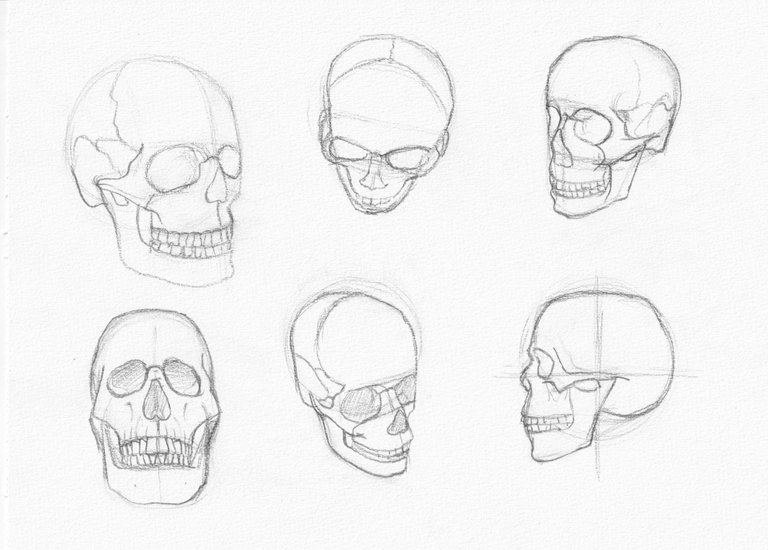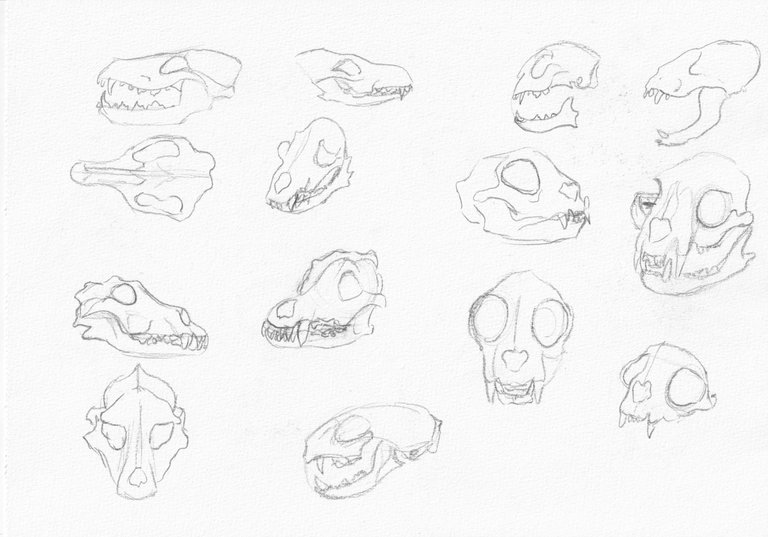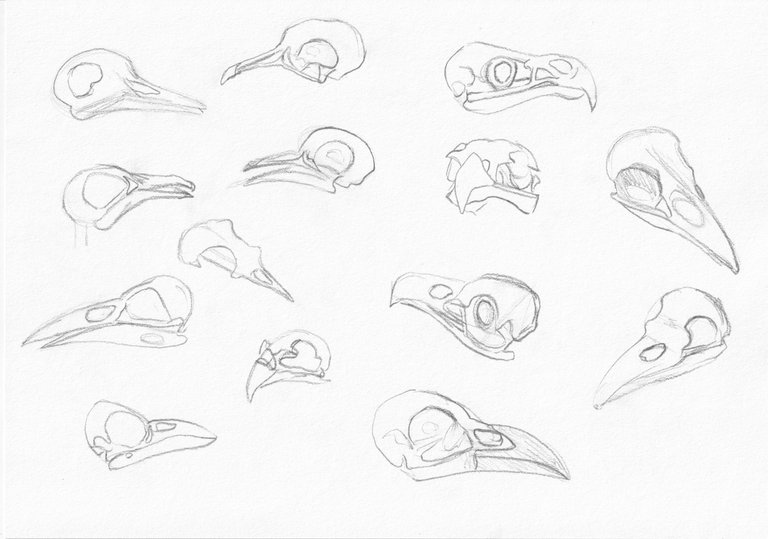
Hi everyone! 😊
Today I am going to show you something different, some studies I have done on the skull.
First, I study the classic adult skull. I used a 3D model to be able to look at the skull from any angle and analysed its angles and shapes.
It is because of the 3D model that my sketches seem to have a distorted perspective 😁.

Then I became interested in the baby's skull, its differences from the adult skull.
The baby's skull seems more spherical because the jaw is very small. As the skull develops, it becomes more pointed and less rounded.

Then I look at the skulls of the great apes. They are really more elongated compared to humans, they have a bigger, more prominent jaw. The skull itself is actually smaller. We can sum all this up by the fact that, compared to humans, the emphasis is much more on hunting ability than on mental capacity. This, of course, follows the theory of evolution.
And that's a really interesting point in studying skulls: why are they like this or that?
What is the function of these parts?
Why did nature make things like this?
And, following these thoughts, this exercise can lead to the creation of original character designs. In fact, by studying the mechanical side of human and animal bodies, we understand that the desired goals of the species and their functions in the animal kingdom dictate their aesthetics and shape.
So we can easily reconstruct a brand new fictional animal and say to ourselves: "I want it to have a big jaw because it's a big predator, but a small skull because it's not very intelligent", for example.

After the apes, I made sketches of some small predators like cats and foxes. Some have more elongated jaws than others, but they all have in common the two large front canines.

Finally, for a little variety, I made some bird skulls. Even though they are completely different, we can still see the same pattern: a spherical/ovoid skull with large eye sockets, attached by a long form used to catch and eat their prey - this time not a jaw but a beak.
Seeing the common aspects of natural elements will allow you to understand all the mechanics behind them and then make good drawings, even without references.

I hope you will like it.
See you soon for more creations 😊